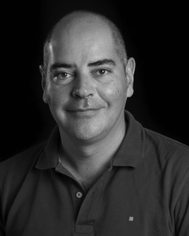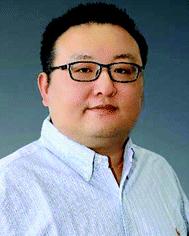Introduction to advances in plasmonics and its applications
Ramon A.
Alvarez-Puebla
ab,
Jian-Feng
Li
c and
Xing Yi
Ling
 d
d
aDepartment of Physical Chemistry, Universitat Rovira i Virgili, Carrer de Marcellí Domingo s/n, 43007 Tarragona, Spain. E-mail: ramon.alvarez@urv.cat
bICREA, Passeig Lluís Companys 23, 08010 Barcelona, Spain
cState Key Laboratory of Physical Chemistry of Solid Surfaces, College of Chemistry and Chemical Engineering, Xiamen University, Xiamen 361005, China. E-mail: Li@xmu.edu.cn
dDivision of Chemistry and Biological Chemistry, School of Physical and Mathematical Sciences, Nanyang Technological University, 21 Nanyang Link, 637371 Singapore. E-mail: xyling@ntu.edu.sg
Plasmonics can be defined simply as the science that studies plasmons. A plasmon can be defined as the quantum of plasma oscillations, from the point of view of quantum physics, or as the electromagnetic field produced by the collective oscillations of the conduction electrons in a given material, as considered by classical physics. When a plasmon is coupled with electromagnetic radiation, another quasiparticle called a plasmon-polariton is generated and this phenomenon occurs at characteristic frequencies, which for materials such as gold and silver are within the visible spectrum of light. Plasmons can be classified as a function of the place where they are excited. Thus, plasmons excited in the bulk of large materials, usually by electron beams, are known as bulk plasmons (non-radiative). Those excited on the surface of continuous thin films, usually by light, are denominated as surface plasmon resonances (SPRs, non-radiative). However, plasmons excited in small particles (i.e., nanostructures) are designated as localized surface plasmon resonances (LSPRs, radiative) and are the essence of nanoplasmonics.1
Plasmons can be tracked back over 100 years. In 1902, Wood reported an anomalous decrease in the intensity of light reflected by a metallic grating, which we now know is attributed to the excitation of SPRs mediated by the periodic structure of the grating.2 In 1904, Maxwell Garnett explained the color of glasses containing small metallic particles by developing the Maxwell Garnett theory of effective dielectric constant.3 This development was followed by Mie's electromagnetic theory of scattering and absorption of light by spherical particles, which explained the color in colloidal solutions of metals.4 The term plasmon was first proposed and theoretically demonstrated by Bohm in 1952,5 followed by the theoretically derived dispersion of SPRs in films by Ritchie (1957)6 which was experimentally demonstrated by Powell and Swan in 1959.7 Andreas Otto demonstrated the possibility of exciting SPRs on silver in 1968,8 paving the road for SPR biosensors. Finally, in 1974 Fleischmann reported on the extremely strong Raman signals of pyridine molecules adsorbed at roughened surfaces of a silver electrode,9 the basis of surface-enhanced Raman scattering (SERS) spectroscopy, misunderstanding the cause as a pure surface increase due to the redox cycles rather than a LSPR effect as demonstrated later by Jeanmaire and Van Duyne10 and Albrecht and Creighton in 1977.11 During the eighties and most of the nineties the field of plasmonics decayed, with mostly academic demonstrations of the enhancing capabilities of SERS spectroscopy, as stated by Martin Moskovits in 1985,12 with a mighty rebirth after the SERS demonstration of single molecule detection by the Kneipp13 and Nie14 groups in 1997. From this point onward, the field of plasmonics was refueled and started to expand and penetrate into various interdisciplinary research fields such as materials science, analytical chemistry, biology or medicine.
In this themed issue we have assembled a collection of articles related to the wide field of plasmonics and its latest developments including theory, methodology, material fabrication and a large sample of applications in environmental, biological and medical fields. Finally, it is our great pleasure to be the guest editors of this themed issue. We are very grateful to all the authors for their contributions and splendid cooperation during editing, and especially to Hannah Kerr, Development Editor, and Christopher Dias, Publishing Editor, for their kind help and expert suggestions throughout this process. Also, we are deeply indebted to all the reviewers for their prompt and devoted professional evaluation, critical to maintaining the quality of the issue.
References
- M. I. Stockman, Phys. Today, 2011, 64, 39–44 CrossRef.
- R. W. Wood, London, Edinburgh Dublin Philos. Mag. J. Sci., 1902, 4, 396–402 CrossRef.
- J. C. Maxwell Garnett, Philos. Trans. R. Soc. London, A, 1904, 203, 385–420 Search PubMed.
- G. Mie, Ann. Phys., 1908, 330, 377–445 CrossRef.
- D. Pines and D. Bohm, Phys. Rev., 1952, 85, 338–353 CrossRef CAS.
- R. H. Ritchie, Phys. Rev., 1957, 106, 874–881 CrossRef CAS.
- C. J. Powell and J. B. Swan, Phys. Rev., 1959, 115, 869–875 CrossRef CAS.
- A. Otto, Z. Phys. A: Hadrons Nucl., 1968, 216, 398–410 CrossRef CAS.
- M. Fleischmann, P. J. Hendra and A. J. McQuillan, Chem. Phys. Lett., 1974, 26, 163–166 CrossRef CAS.
- D. L. Jeanmaire and R. P. Van Duyne, J. Electroanal. Chem. Interfacial Electrochem., 1977, 84, 1–20 CrossRef CAS.
- M. G. Albrecht and J. A. Creighton, J. Am. Chem. Soc., 1977, 99, 5215–5217 CrossRef CAS.
- M. Moskovits, Rev. Mod. Phys., 1985, 57, 783–826 CrossRef CAS.
- K. Kneipp, Y. Wang, H. Kneipp, L. T. Perelman, I. Itzkan, R. R. Dasari and M. S. Feld, Phys. Rev. Lett., 1997, 78, 1667–1670 CrossRef CAS.
- S. Nie and S. R. Emory, Science, 1997, 275, 1102–1106 CrossRef CAS PubMed.
| This journal is © The Royal Society of Chemistry 2021 |



